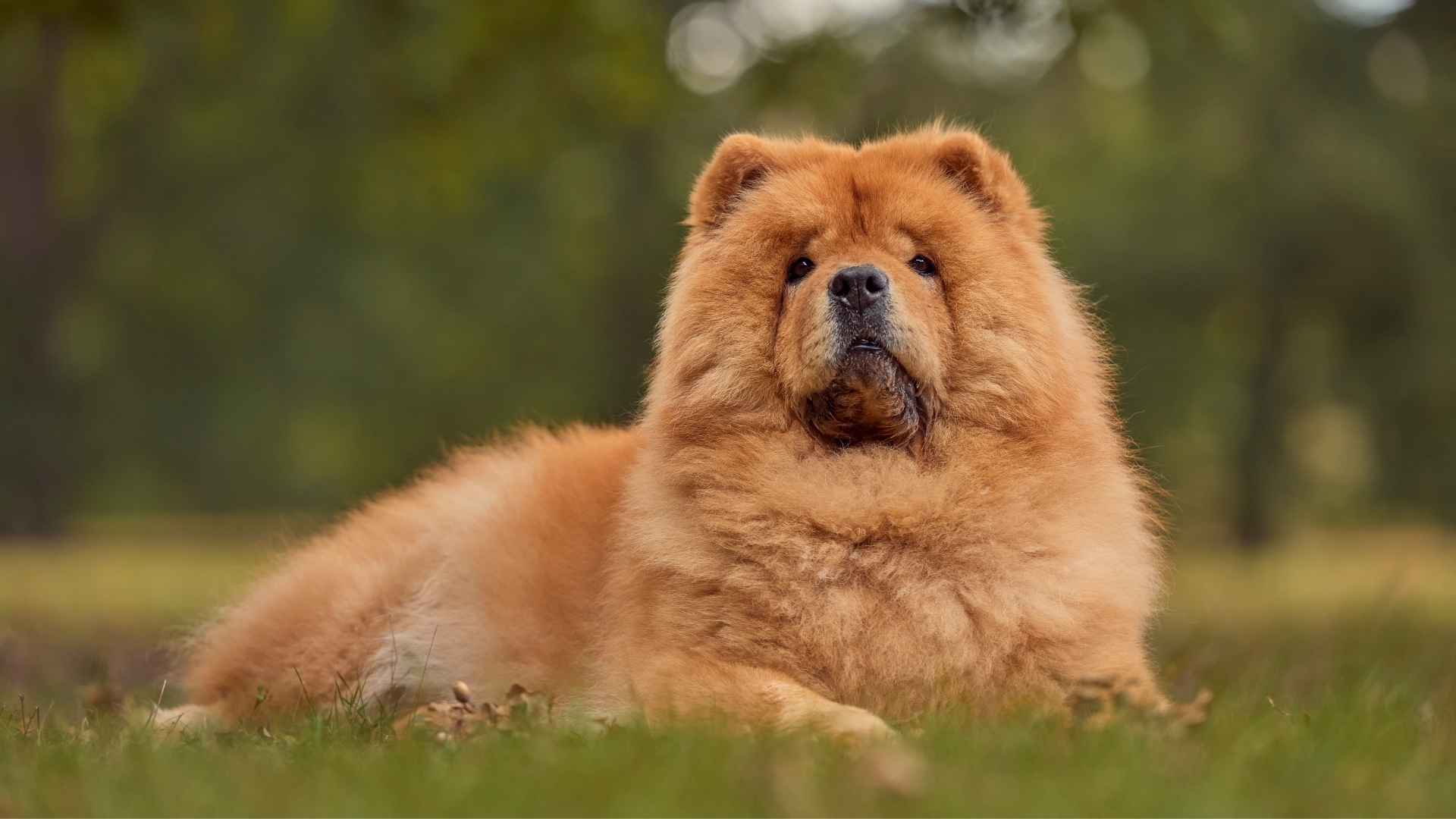Some dogs live for snuggles, happily curling up in your lap and showering you with kisses. Others, however, prefer a bit more personal space. This doesn’t make them any less lovable—it simply means they’re more independent. These less outwardly affectionate breeds often reserve their warmth for those they truly trust, showing deep loyalty once a bond is formed.
In fact, many of these dogs make wonderful companions for people who value mutual respect over constant clinginess. While they may not welcome every stranger’s pat on the head, they thrive in calm, consistent environments where they can connect on their own terms. For the right owner, their quiet devotion can be even more rewarding than a dog who never leaves your side.
If you’ve ever dreamed of a loyal sidekick who’s content lying nearby rather than on top of you, this list is for you. Here are the top 9 least friendliest—yet deeply devoted—dog breeds you might just fall in love with.
Least Friendliest Dog Breeds
1. American Bulldog
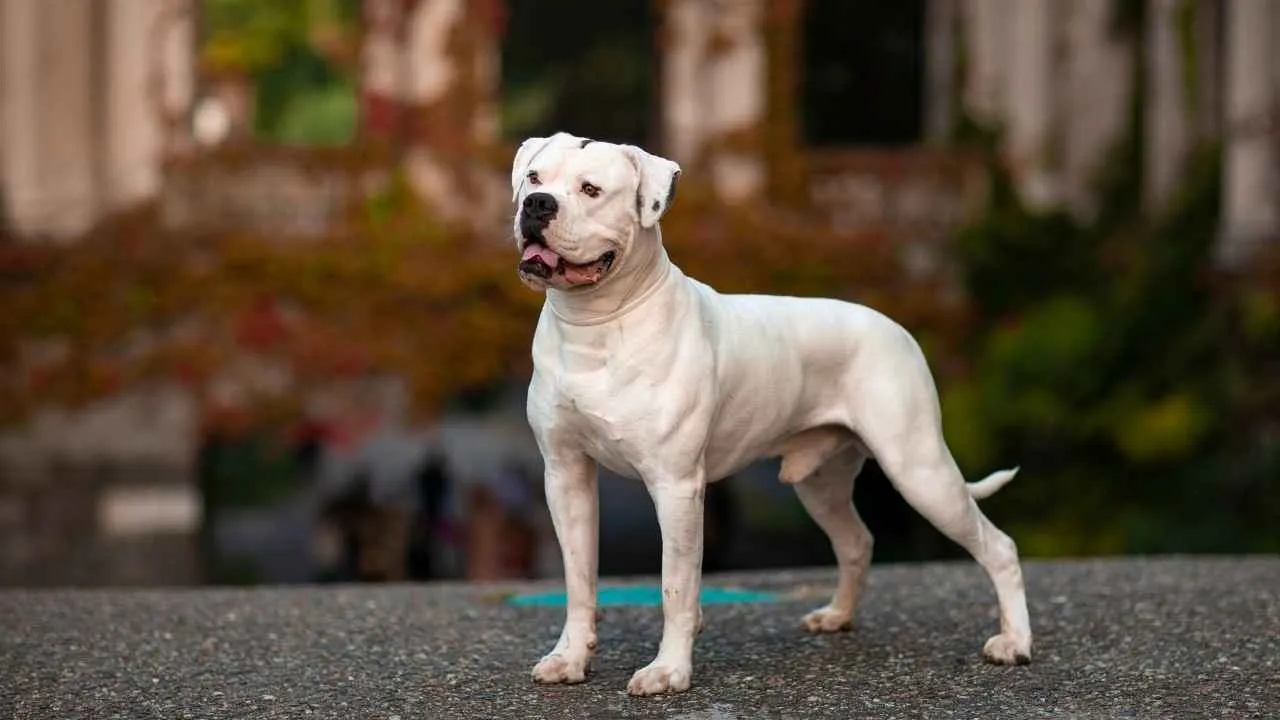
Also known as the White English Southern Bulldog in parts of the South, the American Bulldog is a muscular, medium-to-large working breed with a powerful build and strong jaw. AKC says the American Bulldog is loyal and self-confident.
Standing between 20 and 28 inches tall and weighing 60–120 pounds, these athletic dogs were originally bred in the United States for farm work, including chasing stray cattle and guarding property.
Descended from the English Bulldog brought over by immigrants in the 17th and 18th centuries, they were valued for their grit in bringing down feral pigs and protecting livestock. Distinct types include the stockier Johnson (Bully) type, the sleeker Scott (Standard) type, and hybrids of the two.
Despite their imposing frame and agility, American Bulldogs can be wary of strangers, which makes them excellent watchdogs but also less outwardly friendly than some breeds.
They are loyal to their families and thrive when given purposeful work, consistent structure, and early socialization. Their broad, blocky head, expressive eyes, and confident stance make them unmistakable in appearance.
Ideal Owner
Best suited for experienced owners with the time and energy to provide daily exercise, firm yet positive training, and plenty of mental engagement. They do well with active individuals or families who can channel their strength and drive into constructive activities.
Fun Fact: The American Bulldog nearly vanished by the mid-20th century, but dedicated breeders in the South revived the population, preserving its working-dog legacy.
2. Chow Chow
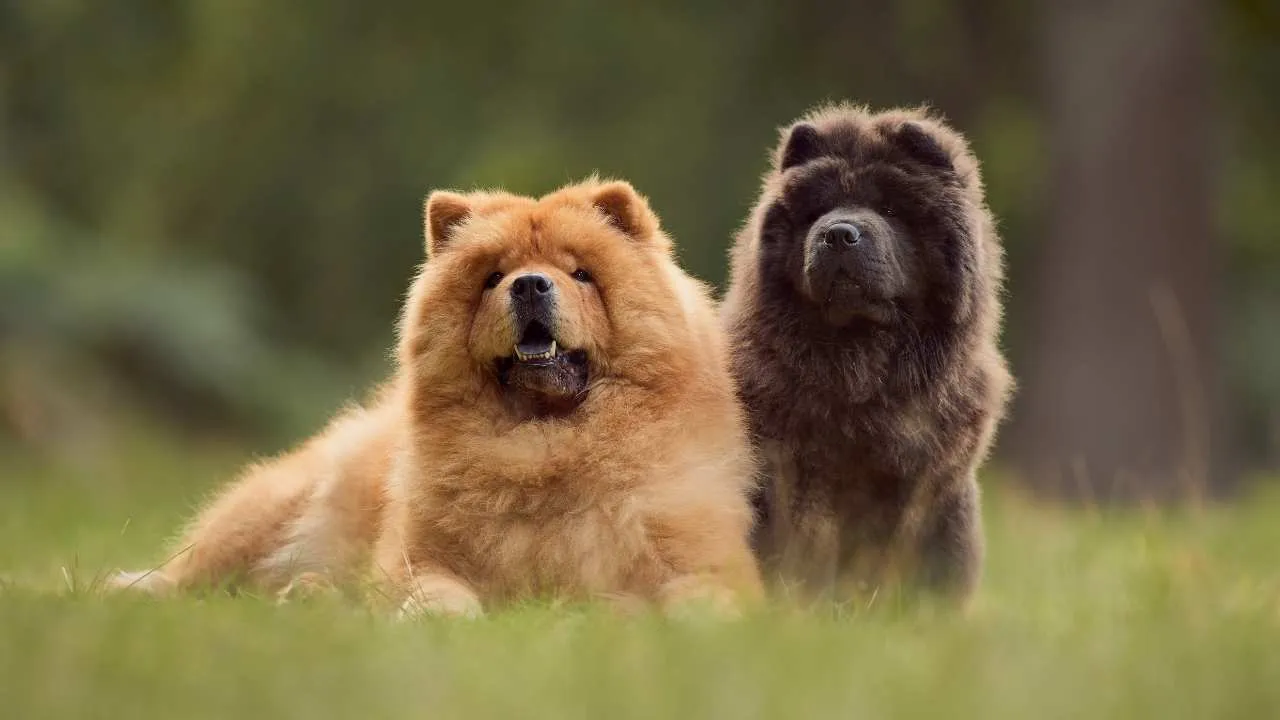
The Chow Chow, also known as the “Chow” or historically the “Edible Dog,” is one of the world’s oldest and most distinctive breeds, originating in ancient China during the Han dynasty (206 BCE–220 CE).
Standing 17–20 inches at the shoulder and weighing 45–70 pounds, this compact, muscular dog is famous for its lion-like mane, deep-set almond eyes, and uniquely pigmented blue-black tongue.
Their dense double coat—either rough or smooth—comes in shades such as red, black, blue, cinnamon, or cream, lending to their regal appearance. Bred as multipurpose working dogs, Chows have been hunters, guardians, and even draft animals.
Ideal Owner
Chow Chows are best suited for experienced, patient owners who appreciate their independent, dignified nature. They thrive in calm households, whether in city apartments or suburban homes, provided they have a quiet space and consistent routines. PetMD says a Chow Chow’s temperament can be aloof and cautious around new people and other pets.
Families with older children or single individuals often match well with this breed, as Chows can be overwhelmed by excessive noise or activity. Early and ongoing socialization is key to ensuring they remain well-mannered and confident around strangers.
Fun Fact: The Chow Chow is one of only a few dog breeds with a naturally blue-black tongue, a trait shared with the Chinese Shar-Pei, Eurasier, and Thai Ridgeback.
3. Anatolian Shepherd Dog
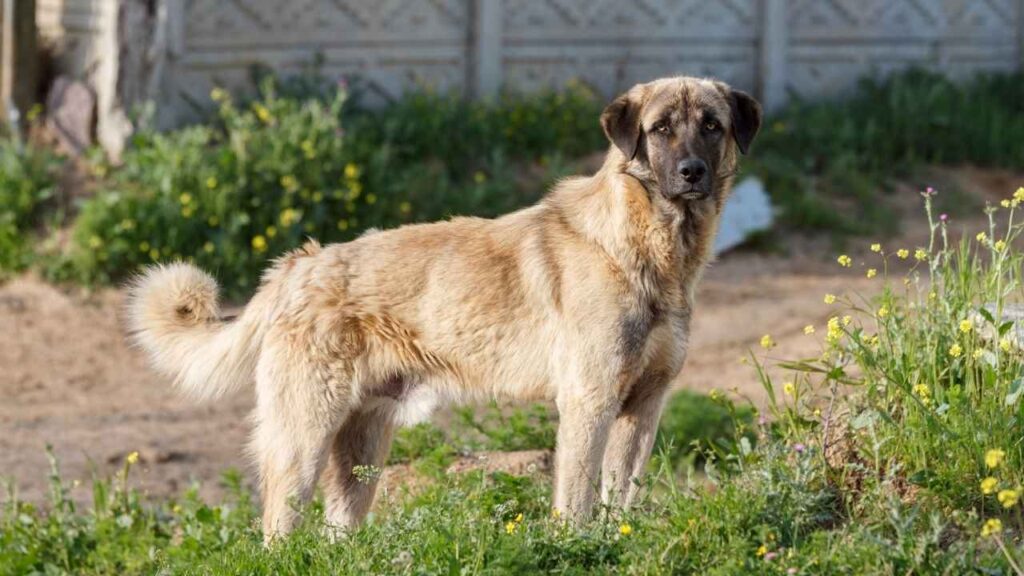
The Anatolian Shepherd Dog, also known as the Anatolian Karabash Dog, is an ancient livestock guardian originating from Turkey. Bred to blend in with the herds they protected, these imposing canines often stand 27–29 inches tall and weigh between 120 and 150 pounds.
Their muscular, agile build and alert demeanor made them formidable against predators. With a lineage dating back thousands of years, they remain prized for their endurance, independence, and unwavering devotion to their “flock,” whether that’s livestock or family. Their thick double coat, often fawn with a black mask, offers protection in varied climates.
Ideal Owner
This breed thrives with a confident, experienced handler who understands the instincts of independent working dogs. The ideal owner can provide consistent training, early socialization, and a secure space for supervised outdoor activity. Purina says the Anatolian Shepherd is loyal and friendly with family members and other familiar people.
Anatolian Shepherds are best suited to those prepared for a protective, occasionally stubborn companion and who can channel their guarding instincts positively. They’re not a fit for first-time dog owners or homes with frequent, unfamiliar visitors.
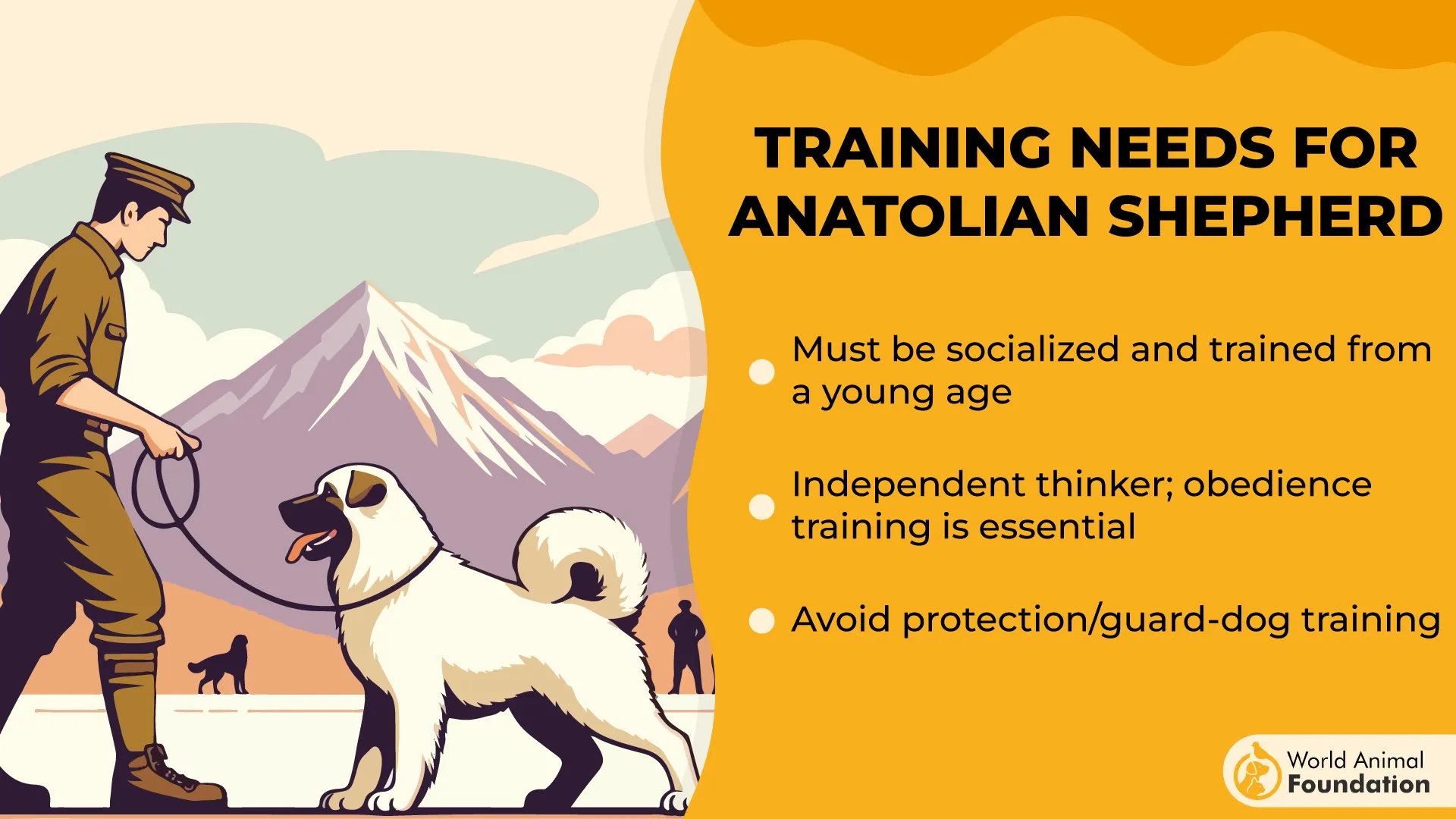
Did You Know?
Anatolian Shepherds were deliberately bred to resemble the livestock they guarded so predators wouldn’t single them out. This camouflage strategy made them even more effective as guardians.
4. Azawakh
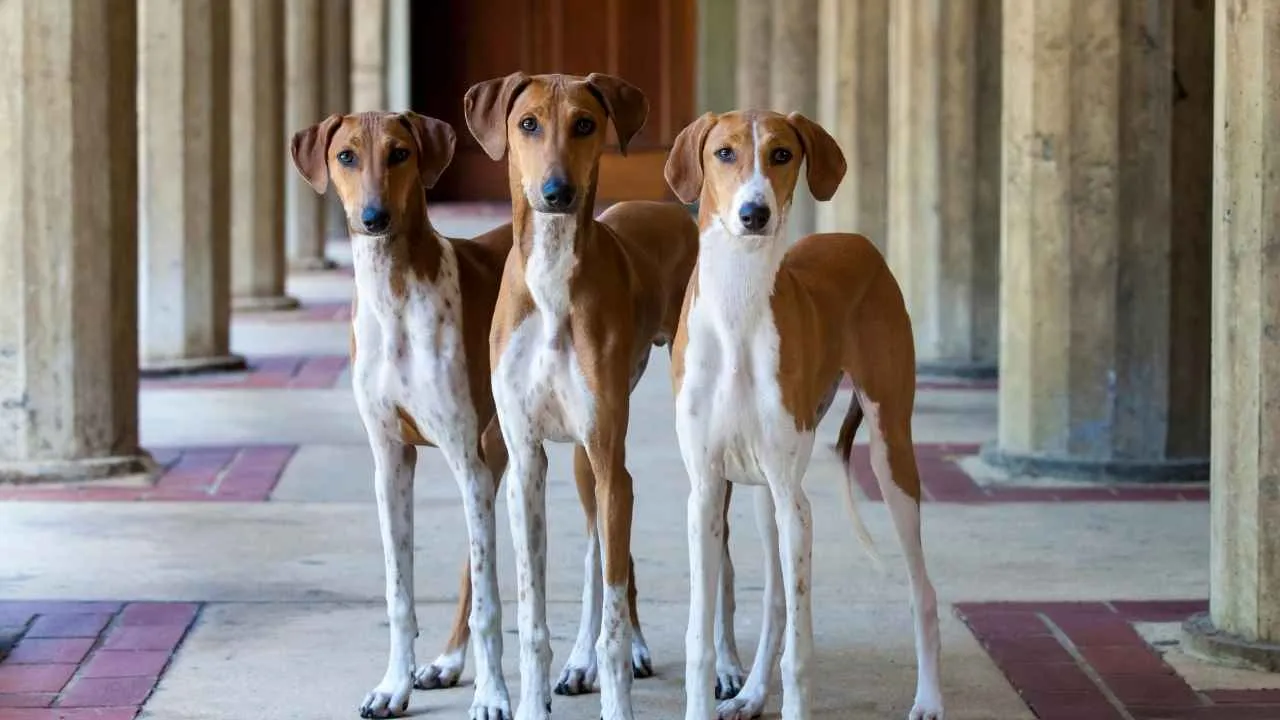
Originating from the arid regions of Burkina Faso, Mali, and Niger, the Azawakh—also called the Tuareg Sloughi—is a tall, refined sighthound with a history as a swift desert hunter. Standing between 23 and 29 inches and weighing 33 to 55 pounds, this breed’s slim frame, deep chest, and long legs are built for speed and endurance.
Its short, fine coat can appear in a wide range of colors and patterns, including sand, red, brindle, parti-color, blue, black, and brown, sometimes accented by a black facial mask or white markings. The Azawakh’s elegant, almost skeletal appearance conceals a rugged hunter capable of chasing gazelle across Saharan sands for over a thousand years.
Ideal Owner
The Azawakh is best suited for an active, experienced owner who understands the needs of an independent, high-energy sighthound. Daily leashed runs or long walks are essential, along with access to a secure, open area for free running.
This is not a dog for those seeking constant cuddles; the breed tends to be reserved with strangers but is deeply loyal once bonded. Owners should provide both physical activity and mental stimulation to keep the Azawakh content.
Fact: The Azawakh possesses a distinctive double-suspension gallop, allowing it to cover ground with breathtaking speed and grace.
5. Korean Jindo Dog
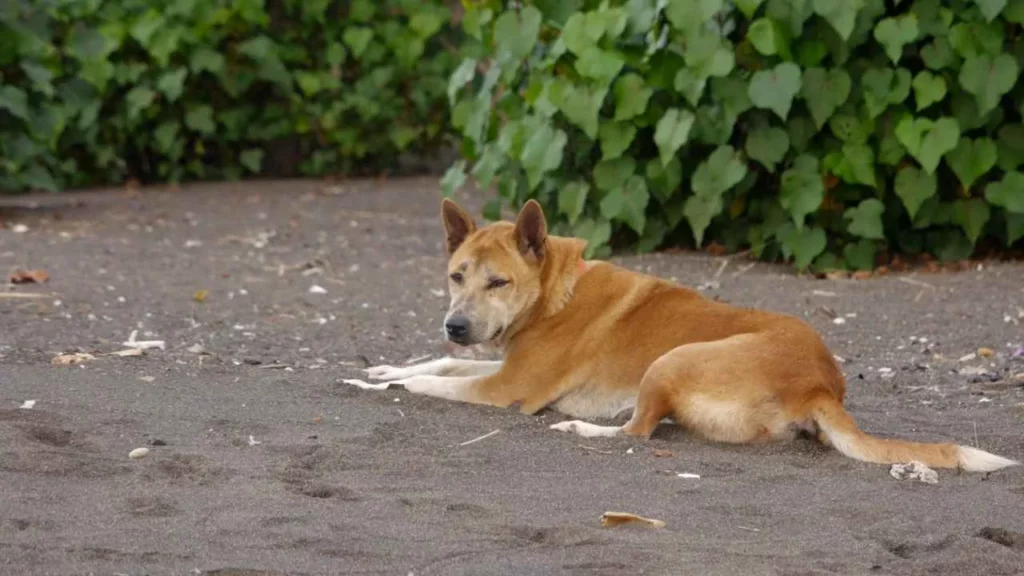
Also known simply as the Jindo, this medium-sized spitz breed hails from Jindo Island off the coast of South Korea, where it developed naturally over centuries.
Recognized for its wedge-shaped head, erect triangular ears, and a thick double coat that can be red fawn, white, black, black-and-tan, brindle, or wolf grey, the Jindo stands 17.5–21.5 inches tall and weighs between 33–50 pounds.
With an average lifespan of about 14 years, they belong to the Sporting group and are renowned for agility, keen senses, and exceptional loyalty. Historically, they hunted boar and deer, and their independence still shows in their reserved yet dignified nature.
Ideal Owner
The Jindo thrives with a confident, experienced owner who respects its independence but can provide consistent leadership. This breed bonds closely with one person, making them less suited to large, bustling households or families with small children.
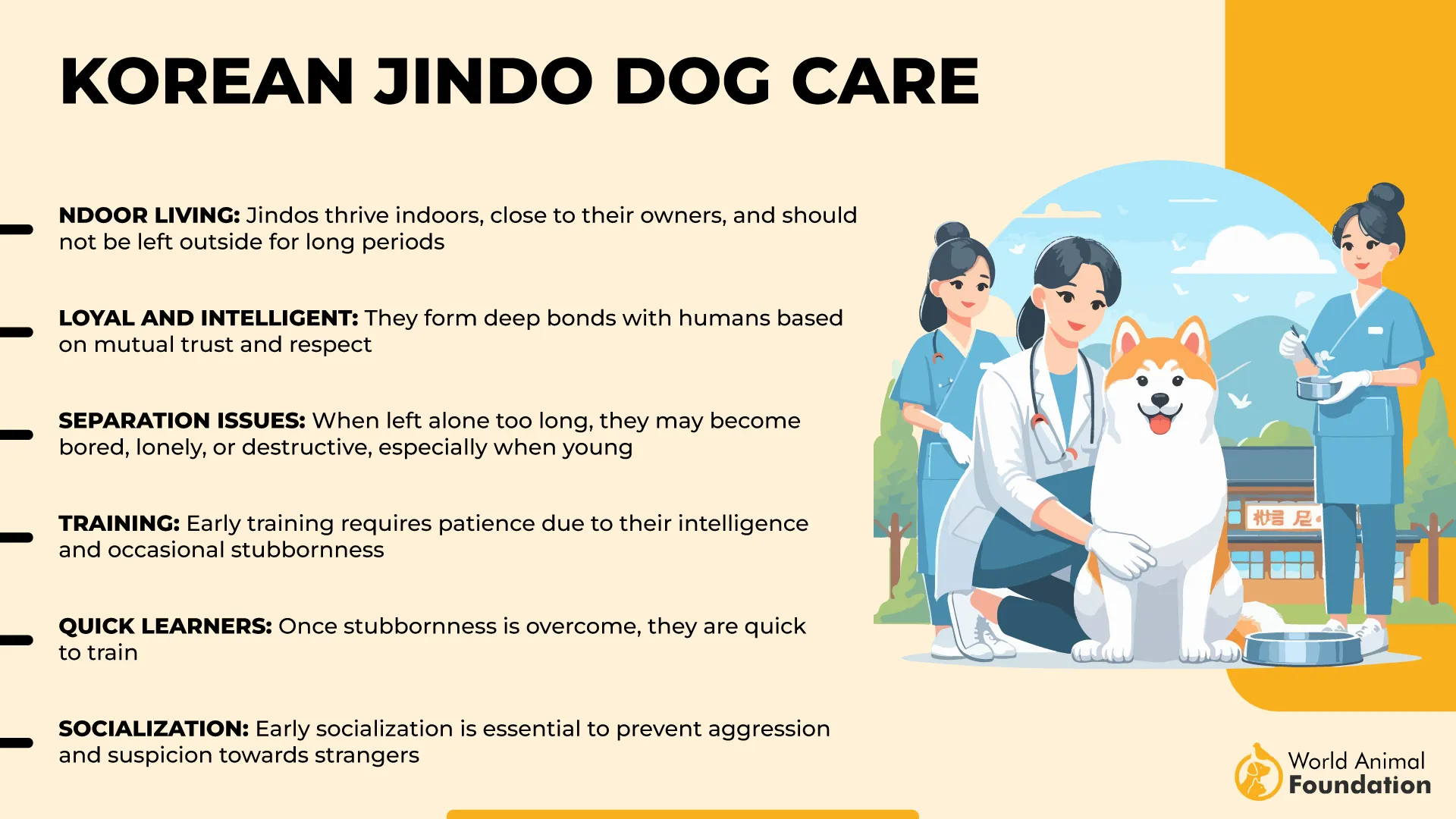
The ideal companion appreciates the Jindo’s clean habits, quiet demeanor, and sharp intelligence, and can commit to regular exercise, mental stimulation, and proper socialization. A secure yard is a must—these dogs are skilled escape artists and have a strong prey drive.
Fact: A Jindo’s loyalty is so legendary that stories tell of them traveling miles to return to their original owner, even after being rehomed.
6. Chihuahua
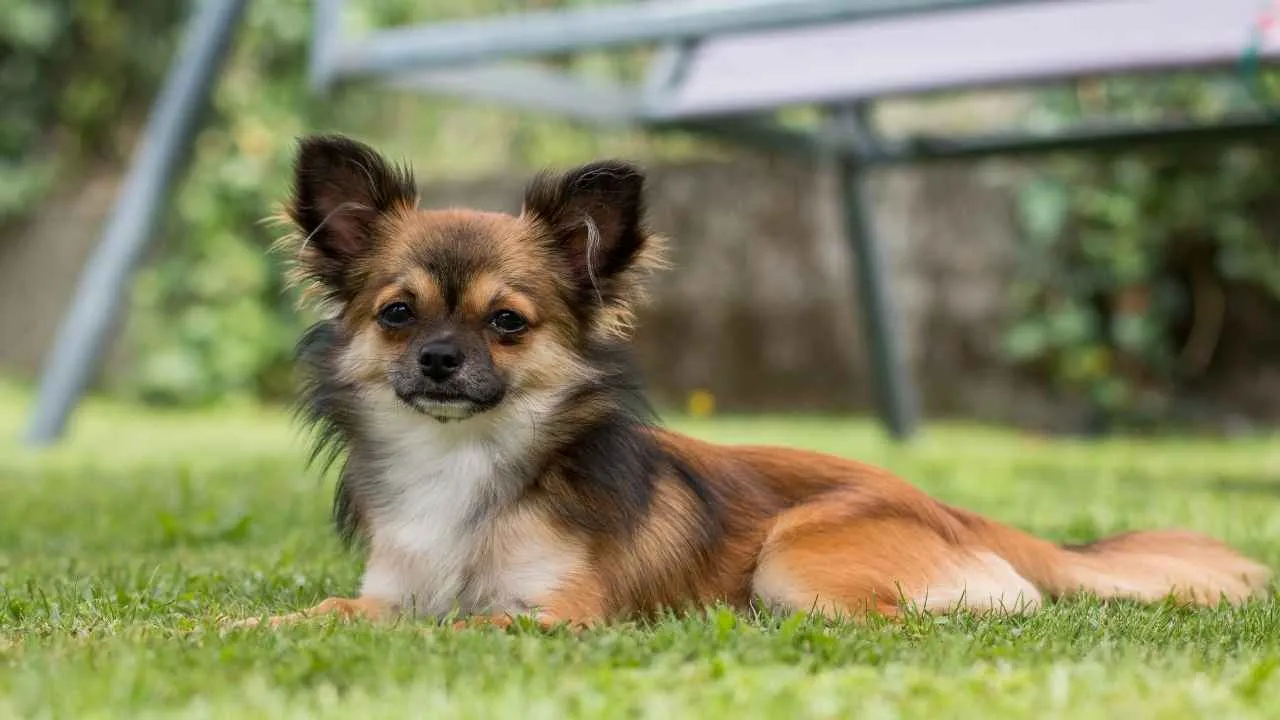
The Chihuahua, also known as the “Chi,” is the smallest recognized dog breed in the world, typically standing 5–8 inches tall and weighing between 1–6 pounds. Originating from Mexico, this toy breed boasts an ancient lineage, believed to descend from the Techichi—a companion dog kept by the Toltec people as far back as the 9th century.
Officially recognized by the American Kennel Club in 1904, the Chihuahua has remained a cultural symbol of Mexico, thanks to its spirited charm and compact size.
Distinct features include its rounded “apple” head, large upright ears, and expressive eyes. Coats can be smooth or long, in a variety of colors and patterns. Despite their delicate frame, these dogs are sturdy, confident, and full of “big dog” attitude.
Ideal Owner
Chihuahuas thrive with attentive owners who can provide consistent companionship and gentle handling. They are best suited for adults, singles, or couples without young children, as their small size makes them vulnerable to rough play.
An ideal owner appreciates their affectionate yet sometimes aloof personality and can commit to proper socialization to prevent overprotectiveness. Apartment living suits them well, provided they get daily playtime or short walks.
Fun Fact: In the late 1990s, a Chihuahua named Gidget became a pop culture icon as the star of Taco Bell’s TV commercials.
7. Central Asian Shepherd Dog
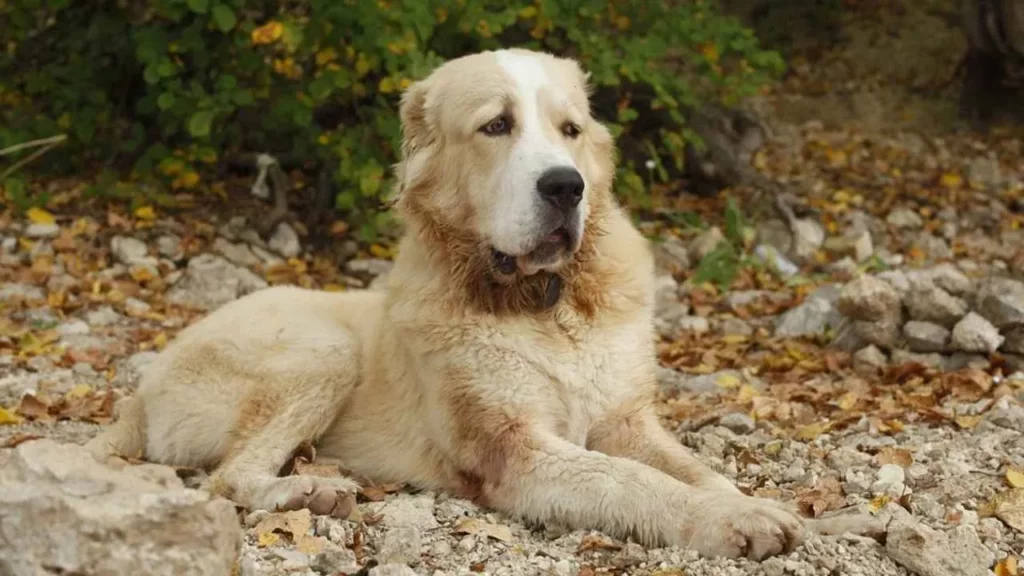
Also known as the Alabay, Alabai, or Turkmen Wolf-Hound, the Central Asian Shepherd Dog is one of the world’s oldest livestock guardian breeds, with roots stretching back over 4,000 years across regions from the Caspian Sea to China and the Southern Urals to Afghanistan.
Bred through natural selection, these imposing dogs were tasked with protecting herds from formidable predators like wolves and bears. Standing 24–32 inches tall and weighing 110–170 pounds, they have a dense double coat in colors ranging from white and fawn to brindle and black, built to withstand both intense cold and heat.
They belong to the Herding Group, boast a 10–15 year lifespan, and are recognized for their muscular build, thick neck, and calm yet watchful demeanor.
Ideal Owner
This breed thrives with experienced owners who can provide consistent training and structured socialization. The Central Asian Shepherd’s independent, protective nature makes them unsuitable for first-time dog owners, but they excel with handlers who understand working guardian breeds.
They need secure space to roam, daily exercise, and firm yet respectful leadership. They can adapt to family life, often doing well with children they know, but require supervision due to their size and protective instincts.
Fact: An ancient vase from 2000 B.C., depicting dogs resembling the Central Asian Shepherd, was found in northern Iran and is now housed in the Louvre Museum in France.
8. Black Russian Terrier
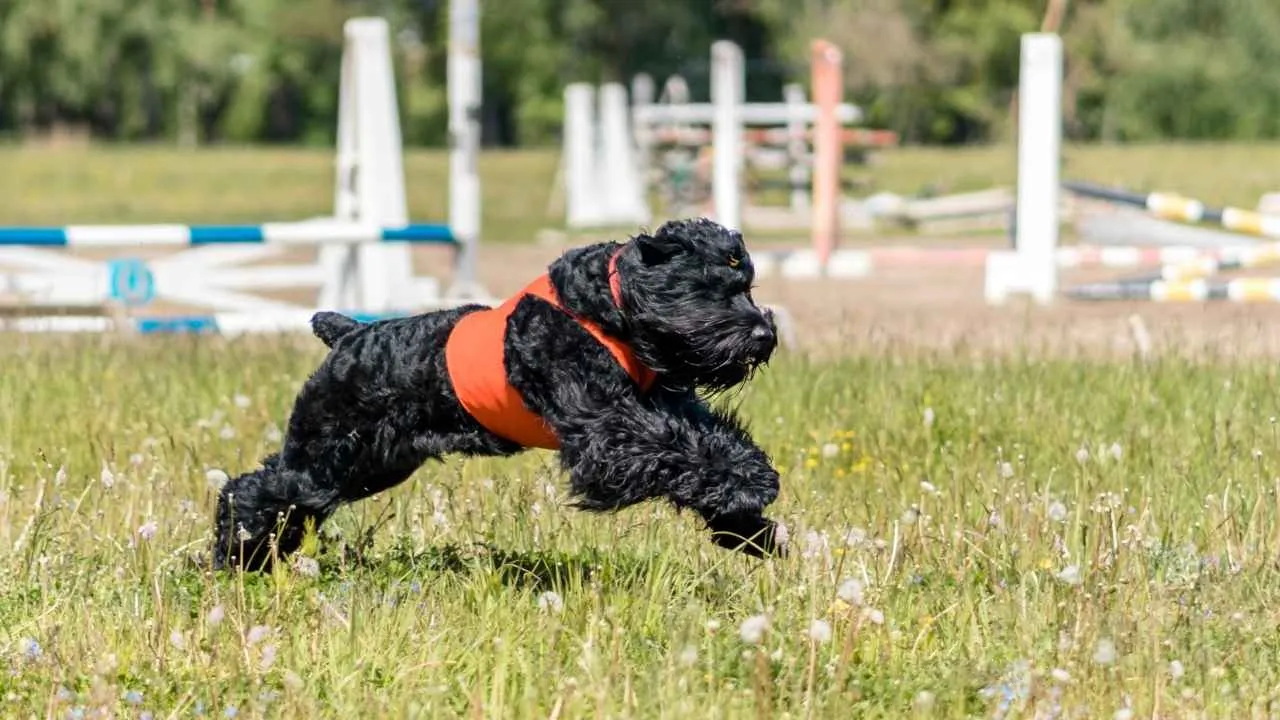
The Black Russian Terrier, also known as the “BRT” or “Black Pearl of Russia,” is a formidable working breed developed in the Soviet Union during the 1930s. Standing up to 30 inches tall at the shoulder and weighing as much as 140 pounds, this powerful dog boasts a dense, tousled all-black double coat built for patrolling even the coldest climates.
Its massive, brick-shaped head, strong bone structure, and confident stance make it both imposing and majestic. Created by crossing 17 different breeds—including the Rottweiler, Giant Schnauzer, and Newfoundland—the BRT was perfected over two decades as a military and police service dog before gaining AKC Working Group recognition in 2004.
With a lifespan of 10–12 years, it combines endurance, intelligence, and protective instincts in one impressive package.
Ideal Owner
The ideal Black Russian Terrier owner is confident and prepared to invest in consistent training. This breed thrives with someone who can provide regular mental stimulation, structured exercise such as long walks or advanced obedience work, and a clear leadership role in the household.
While they are deeply loyal to family, their natural wariness toward strangers means they require a handler who understands guardian-type temperaments. A home with space to move, a secure yard, and an owner committed to grooming the thick coat will suit them best.
Fact: Despite their heavy, weatherproof coat, Black Russian Terriers shed minimally, making them a surprisingly tidy giant breed.
9. Alaskan Klee Kai
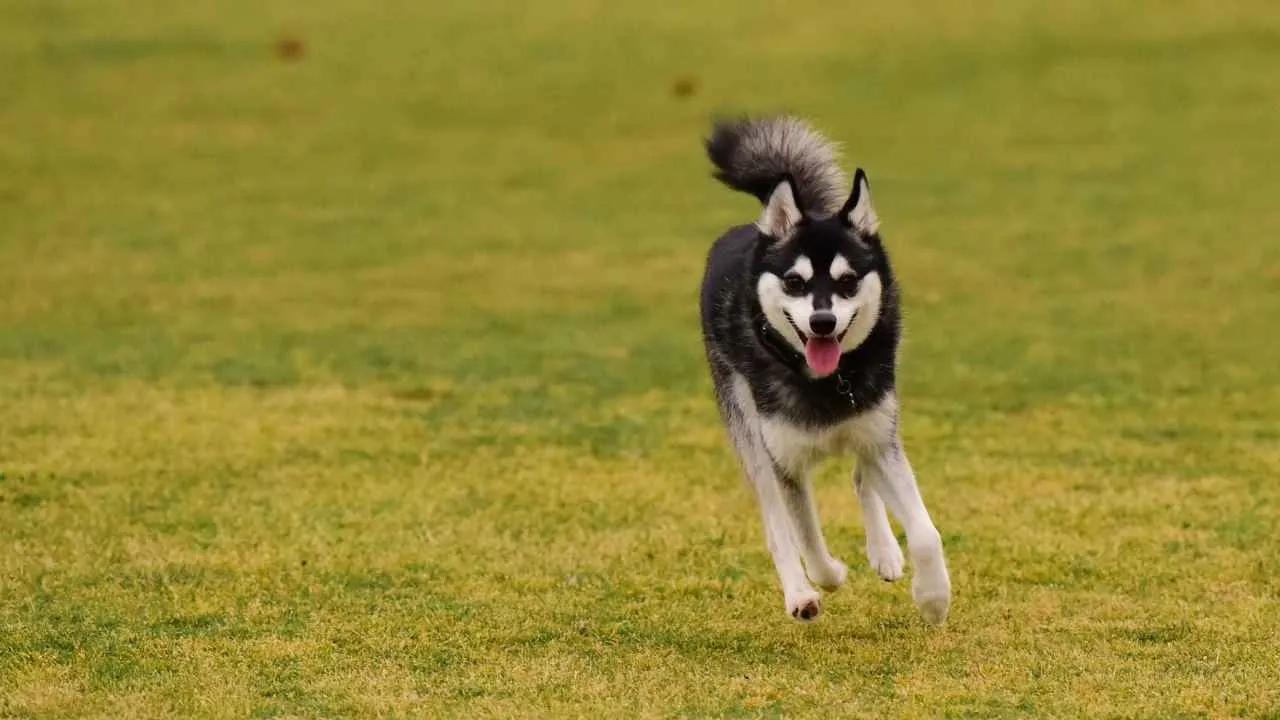
The Alaskan Klee Kai—meaning “little dog” in the Athabaskan language—was developed in Alaska in the 1970s by Linda Spurlin. Bred from Alaskan Huskies, Siberian Huskies, American Eskimo Dogs, and Schipperkes, this compact breed combines northern dog beauty with a more manageable size.
Standing 13–17 inches tall and weighing 10–20 pounds, the Klee Kai boasts a wedge-shaped head, erect triangular ears, a thick double coat in striking contrasting colors, and a loosely curled tail that hints at its Arctic heritage. Agile, alert, and quick on its feet, it moves with a smooth, balanced gait.
Ideal Owner
The Alaskan Klee Kai thrives with an experienced owner who understands independent, intelligent breeds. While playful and affectionate with those they know, they can be reserved—even suspicious—around strangers, making early socialization important.
They need about an hour of daily activity, both physical and mental, to prevent boredom (and the vocal protests that come with it). This is not a breed for someone seeking a low-energy lap dog, but rather for an active individual or family willing to engage with their sharp mind and energetic nature.
Fun Fact: Unlike their Husky cousins, Klee Kai require relatively low grooming—weekly brushing and only a few baths a year keep their coats in top form.
Conclusion
While the “least friendliest” label might sound harsh, it’s important to remember that these dogs aren’t unlovable—they simply express affection differently. Many, such as certain sled dogs and guard dogs, form unshakable bonds but may remain cautious with strangers.
Choosing the right dog means understanding a breed’s instincts and needs, ensuring they match your lifestyle and expectations from a young age. Even other breeds known for being more sociable, like the golden retriever or cavalier king charles spaniels, can vary in temperament depending on upbringing, training, and environment.
Ultimately, there’s no one-size-fits-all when it comes to finding your perfect canine companion. While the breeds in this list might not behave perfectly with every person they meet, they can still be a very good dog for the right owner. Whether your heart leans toward an Australian shepherd, German shepherd, or other dogs entirely, patience, understanding, and respect for their nature will help you create a lifelong bond—just as with any of the other breeds we know and love.


